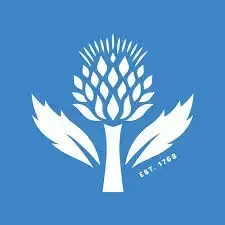John Woo, born in Guangzhou, China, is celebrated as a highly influential John Woo Director renowned for his groundbreaking contributions to the action film genre. His exact birth date remains debated, cited as either May 1 or September 23, 1946, but his impact on cinema is undeniable. Woo’s directorial style is instantly recognizable, characterized by a potent blend of balletic, stylized violence, deeply emotional melodramatic narratives, and recurring themes of brotherhood and honor. He carved a unique niche, particularly within action movies, by combining intense action sequences with profound emotional depth, earning him international acclaim and a lasting legacy.
Early Life and Influences
Woo’s early life experiences profoundly shaped his cinematic vision. He and his family moved from China to Hong Kong in 1950, settling into a crime-ridden slum. This challenging environment pushed him towards sanctuaries of solace and inspiration. He found refuge in the local Chinese Christian church, and equally importantly, in the captivating world of movie theaters. His cinematic palate was diverse, developing a fondness for American musicals and the distinctive works of directors like Sergio Leone, Kurosawa Akira, Sam Peckinpah, and Jean-Pierre Melville. These filmmakers, masters in their own right, exposed Woo to varied narrative styles and visual techniques that would later inform his own directorial approach.
Hong Kong Cinema Breakthrough
John Woo’s formal journey into filmmaking began in 1969 when he took on the role of script supervisor at Cathay Film Company. During this period, he also experimented with creating his own short films, honing his storytelling and visual skills. In 1971, he transitioned to Shaw Brothers, a powerhouse studio in Hong Kong cinema, where he became an assistant to the acclaimed martial arts film director Chang Cheh. This mentorship was pivotal. Chang Cheh’s signature style, known for its graphic violence and strong emphasis on male camaraderie, had a significant influence on Woo, elements of which would become hallmarks of Woo’s own directorial style.
Woo’s first foray into feature film direction was Tiehan rouqing (The Young Dragons), completed in 1973. However, due to its intense violence, the film was not released until 1975. In 1973, Woo signed on as a contract director with Golden Harvest studio. During this time, he showcased his versatility by directing a popular Cantonese opera film, Dinü hua (1976; Princess Chang Ping), and Shaolin men (1976; The Hand of Death), which notably provided Jackie Chan with one of his early significant roles. With Faqian han (1977; Money Crazy), Woo demonstrated his comedic talents, establishing himself also as a director adept at slapstick comedies. Despite his success in comedy, Woo sought new directions. Even after leaving Golden Harvest in 1983 and joining Cinema City, he briefly returned to comedy under studio pressure before steering his career towards action.
It was in 1986 that john woo director truly cemented his legendary status. Partnering with producer-director Tsui Hark, Woo directed the seminal gangster film Yingxiong bense (A Better Tomorrow). This film was a phenomenal box office hit and marked the beginning of a series of action films that garnered Woo international recognition. His innovative style, characterized by the use of expressive slow motion, a sense of nostalgia for traditional codes of honor, subtle Christian symbolism, heightened melodramatic emotions, and over-the-top violence, was unprecedented.
 Chow Yun-Fat in A Better Tomorrow, a defining film by John Woo
Chow Yun-Fat in A Better Tomorrow, a defining film by John Woo
This era also saw the rise of Chow Yun-Fat, who became a major Hong Kong star through his collaborations with john woo director. Chow’s characters in Woo’s films were unique – chivalrous, almost mythical heroes reminiscent of Chang Cheh’s films, yet embodying a contemporary cool akin to Humphrey Bogart. Woo and Chow’s collaborations extended to sequels and other iconic films: Yingxiong bense II (1987; A Better Tomorrow II); Diexue shangxiong (1989; The Killer), a poignant story of a hitman seeking redemption; Zongheng sihai (1991; Once a Thief), a stylish caper film; and Lat sau san taam (1992; Hard Boiled), a high-octane action thriller. Amidst these gangster and action films, Woo also directed Diexue jietou (1990; Bullet in the Head), a more somber film exploring themes of friendship and betrayal against the backdrop of the Vietnam War.
Hollywood and International Success
In 1993, john woo director transitioned to Hollywood, initially facing challenges adapting to the American filmmaking system. His first American film, Hard Target (1993), encountered censorship hurdles, requiring multiple submissions to the Motion Picture Association of America to secure an acceptable R rating. His subsequent film, Broken Arrow (1996), marked his first collaboration with a major American star, John Travolta, signaling a step up in Hollywood.
Face/Off (1997), also starring Travolta alongside Nicolas Cage, proved to be a critical and commercial triumph for john woo director. The film’s success solidified Woo’s position in Hollywood. This was further amplified by Mission: Impossible II (2000), a massive box office hit that grossed over $215 million in the U.S., demonstrating Woo’s ability to helm large-scale Hollywood productions. However, later projects like Windtalkers (2002) and Paycheck (2003), while featuring Nicolas Cage and Ben Affleck respectively, were less successful, and Woo grew increasingly disillusioned with the creative constraints of Hollywood.
Return to China and Later Works
Seeking greater creative freedom, john woo director returned to China to undertake the ambitious two-part historical epic Chibi (2008; Red Cliff) and Chibi II (2009; Red Cliff II). With a substantial budget of $80 million, it was the most expensive Chinese-language film production at the time. Set during the Three Kingdoms period, Red Cliff showcased Woo’s signature action choreography within a grand historical narrative, balancing spectacular action with compelling character development. The Red Cliff films were a resounding box office success globally, grossing over $200 million. In 2010, Woo co-directed Jianyu Jianghu (Reign of Assassins), another historical action film set in ancient China. That same year, his distinguished career was recognized with a Golden Lion lifetime achievement award at the Venice Film Festival, a testament to his significant contribution to global cinema.
In a shift from his action-centric work, john woo director explored romantic drama with The Crossing (2014) and The Crossing 2 (2015). These two-part historical epics centered on the tragic sinking of the Taiping ship in 1949, against the backdrop of the Chinese Civil War. Woo later returned to his action roots with Zhuibu (2017; Manhunt), a self-referential cop thriller, demonstrating his enduring passion for the genre that defined his early career.
John woo director‘s innovative approach to action cinema, blending intense visual style with deeply felt emotion, has left an indelible mark on filmmaking worldwide. From his early Hong Kong masterpieces to his Hollywood successes and return to Chinese cinema, John Woo continues to be celebrated as a true visionary and master of the action genre.

